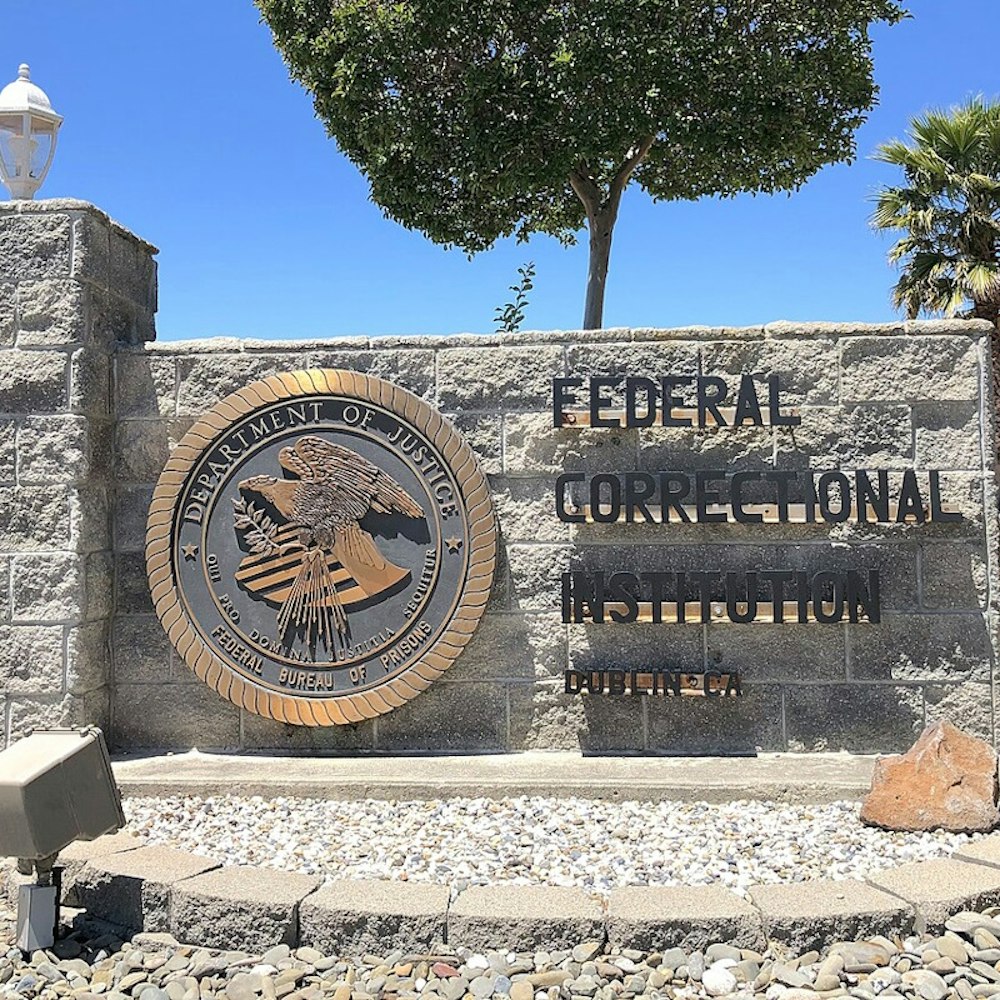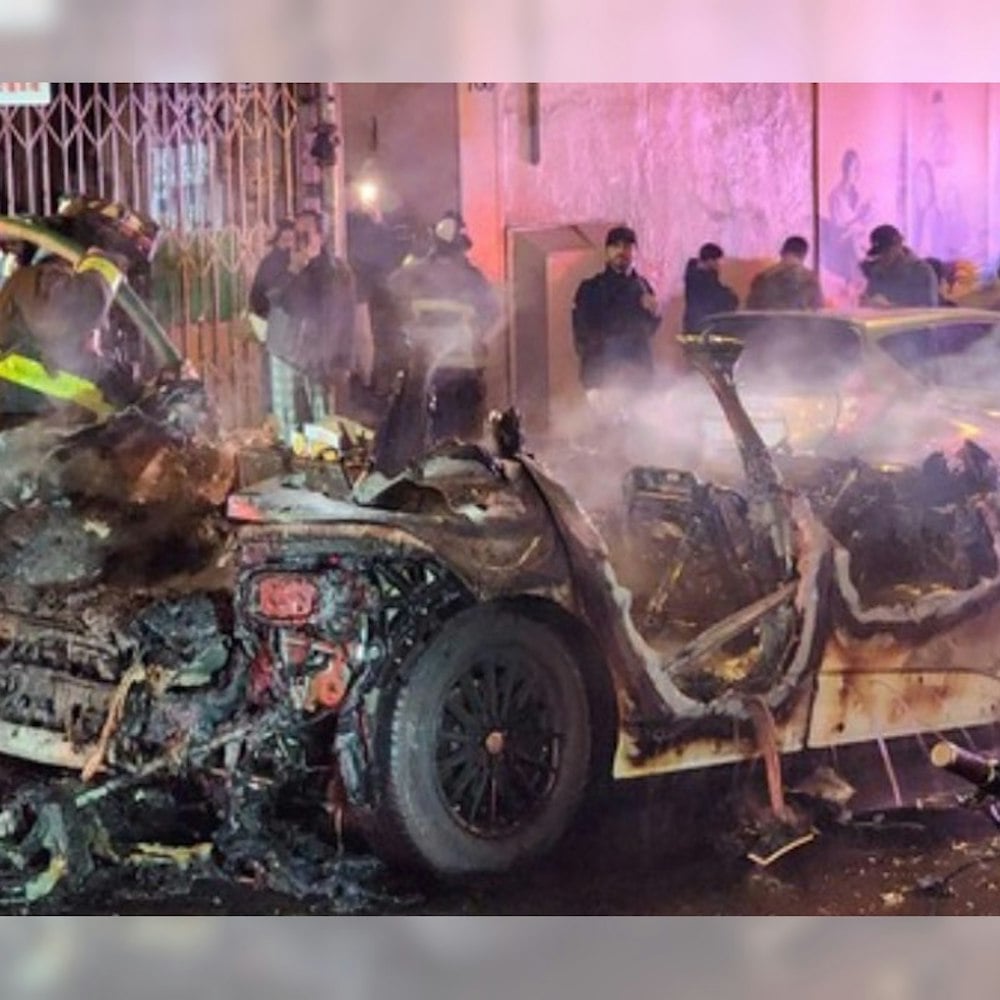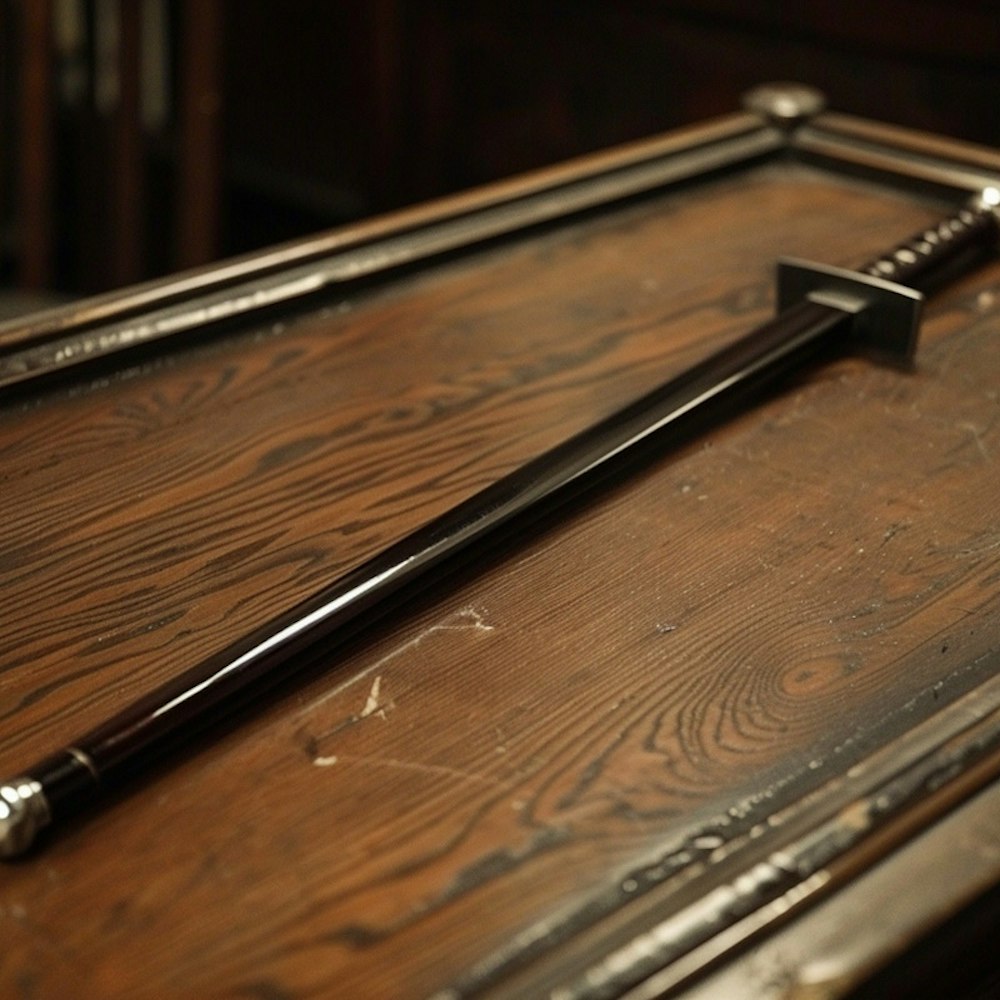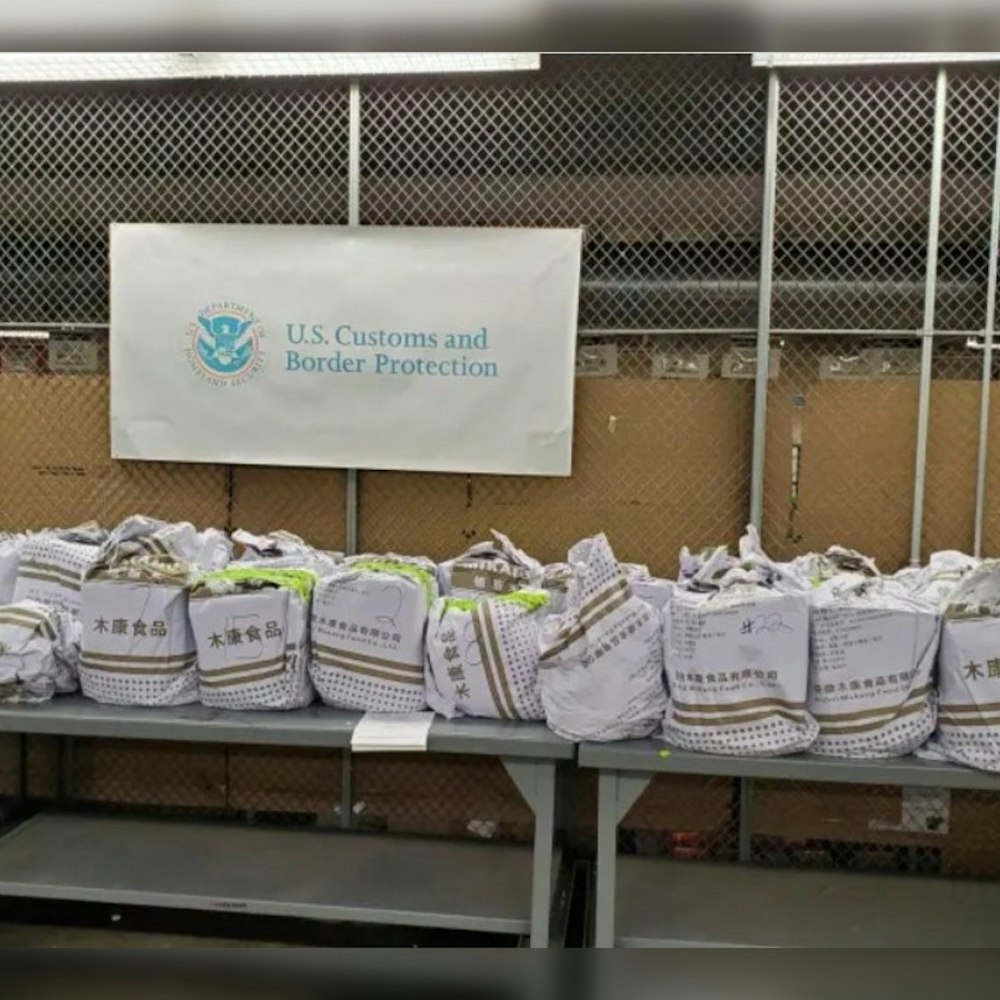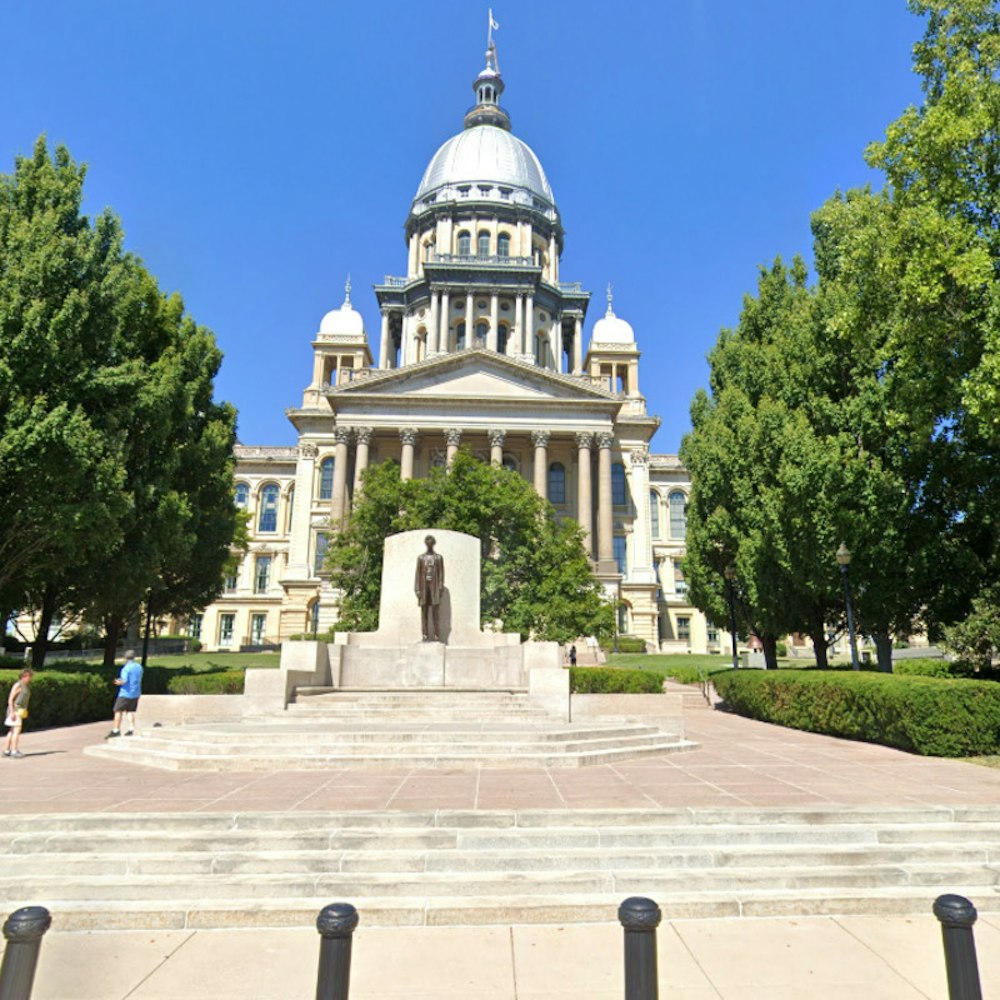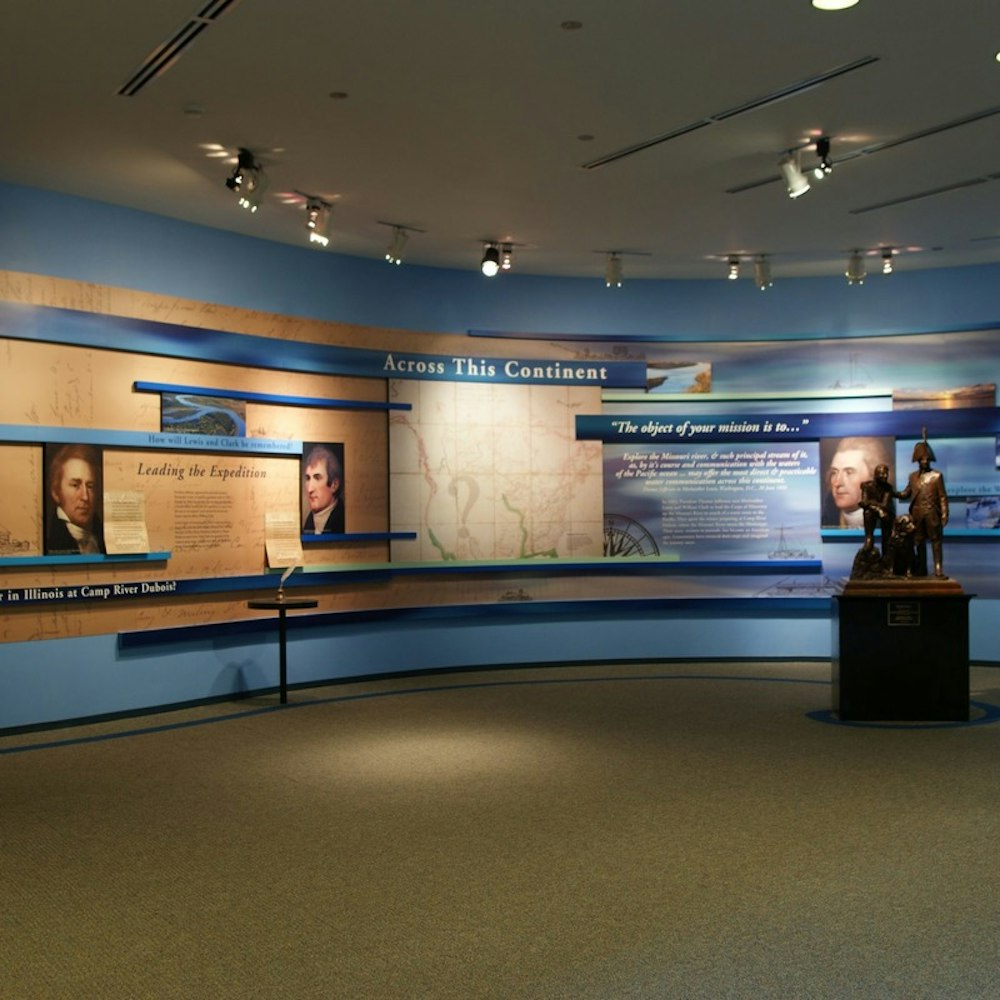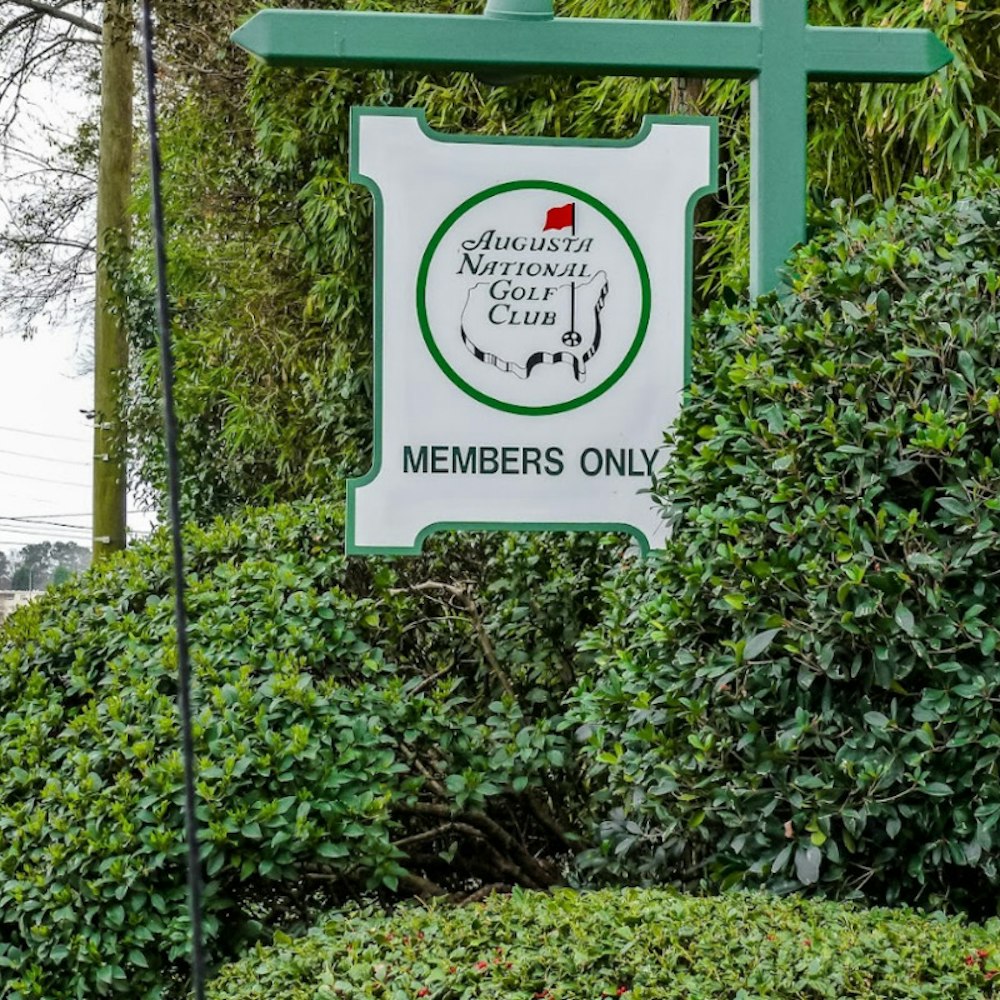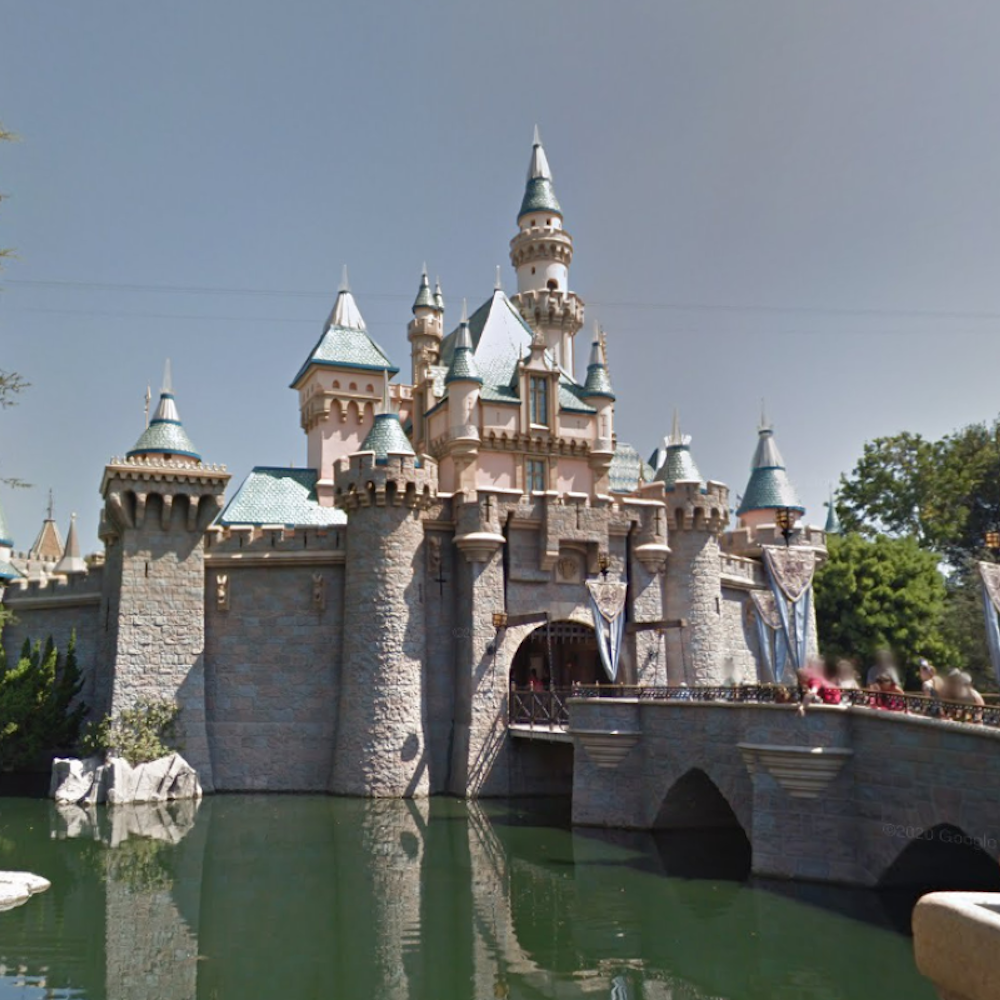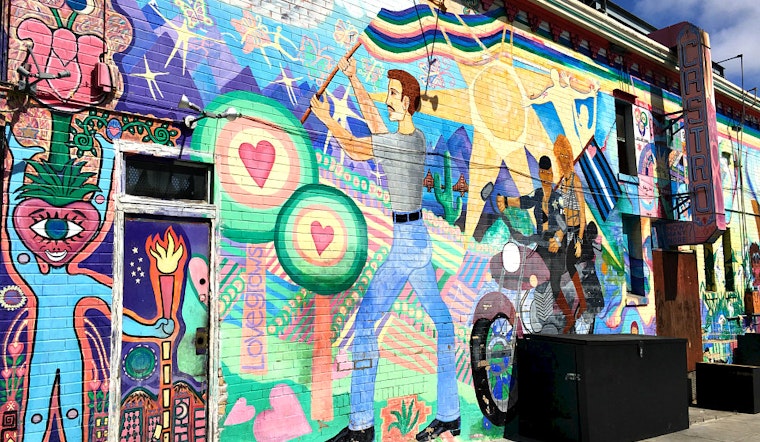
We recently reported on the struggle to tidy up 16th and Market, which has affected both the Castro/Upper Market CBD and The Castro Republic, a forthcoming restaurant at that corner. The intersection has been problematic for years, accumulating garbage and attracting homeless encampments.
But the corner of 16th and Market is also home to one of the Castro’s most important pieces of public art: a mural titled The Hope For the World Cure. Painted in 1998, it commemorates the Castro community’s struggle with the AIDS epidemic.
We recently received an anonymous tip that The Castro Republic was considering painting over the mural. The restaurant’s owner, Juan Romo, said that while he'd considered it, he'd ultimately decided against it. No plans are currently in the works to paint over the mural.
But while the mural as a whole may not be in jeopardy, many in the community hope that the efforts to clean up the corner of 16th and Market might also draw renewed attention to the mural's need for ongoing care and attention.
The Story Behind The Hope For The World Cure
The Hope for the World Cure was painted in 1998, on the back wall of what was then Bagdad Café. The community mural workshop was a collaboration between Precita Eyes Muralists and Art From The Heart Heals, and was made possible through a grant from the San Francisco Arts Commission.
According to Susan Cervantes, founder and executive director of Precita Eyes Muralists and the director of The Hope for a World Cure project, the mural brought 17 artists together to design, plan, and paint. All but two of the artists had been directly affected by HIV/AIDS.
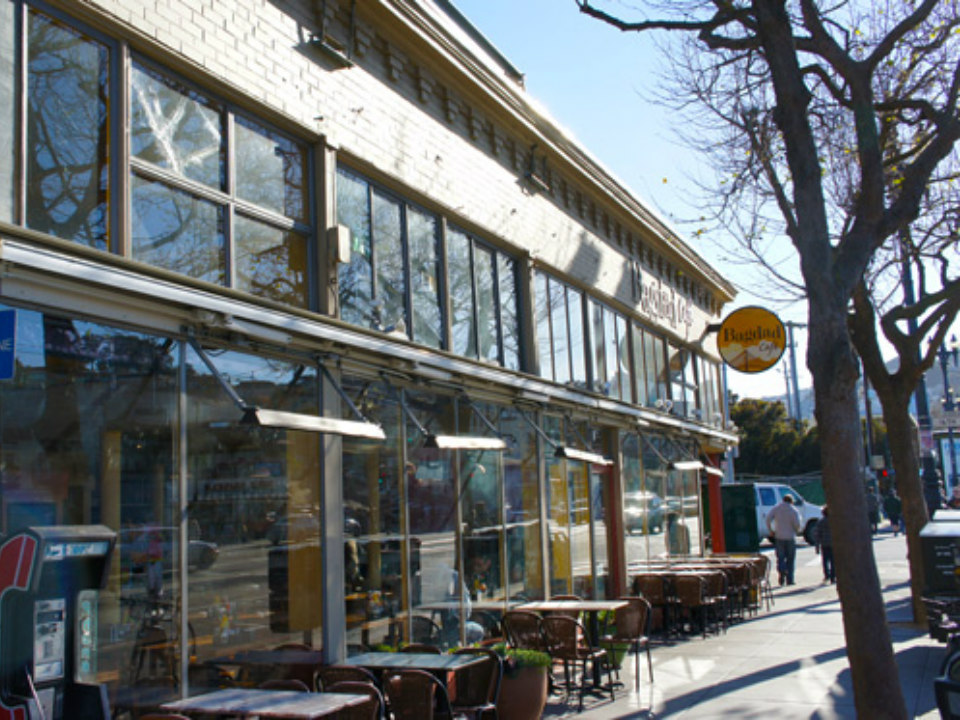
Bagdad Cafe in the late '90s. (Photo: Courtesy of Precita Eyes Muralists)
Cervantes provided us with a written description of the mural, which was compiled from the artists’ own words.
“The mural can be read from right to left, beginning with an elaborate explosion of colors,” wrote Hazel Betsey. “This torrent of colors represents the chaos created by the disease, the beauty in the artist’s life and the beauty she contribute to it. I love life, and the colors add to it.”
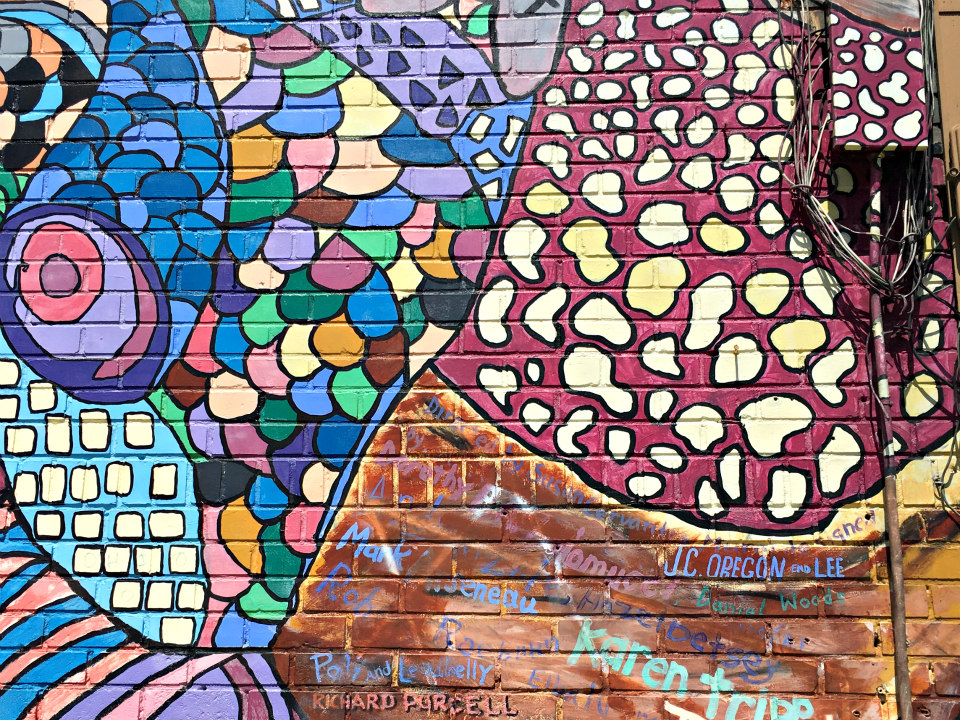
Next, you’ll see a single palm tree, which represents the $13.5 million Market Street renovation, from Valencia up to the Castro. At the time, many felt the renovation called the city’s priorities into question, given the dire need for more money to fund AIDS research and support those affected.
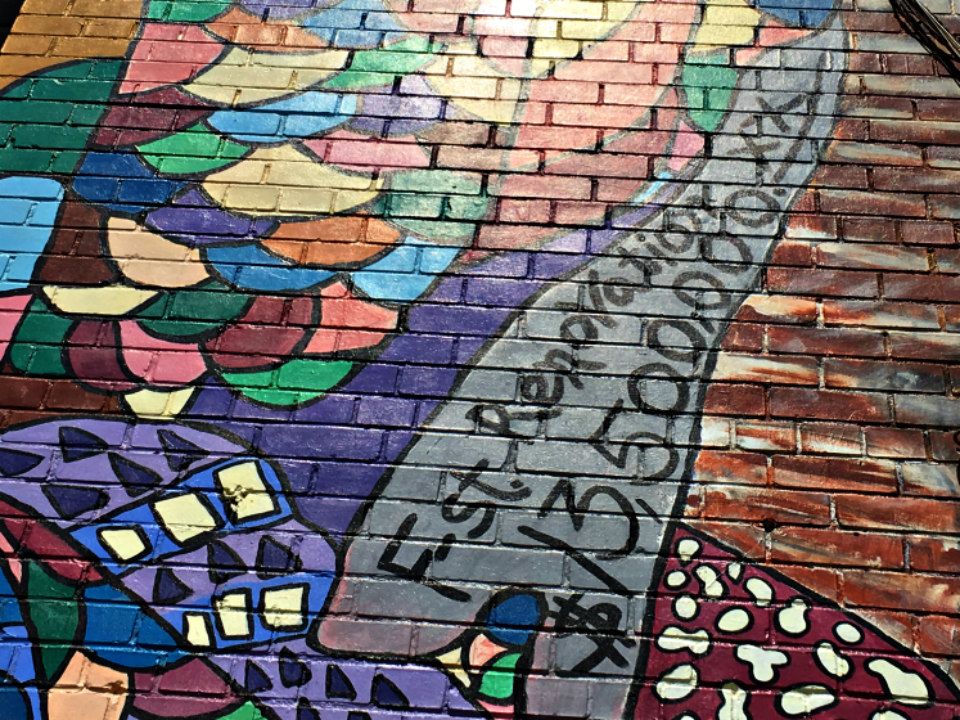
To the left of that are images representing the AIDS virus itself, above “a figure holding the world, urging us to ‘Be there for the World Cure,’” wrote Andy Arzate. This blends into tear drops, “indicating the many tears that have been shed,” added Jose Escalante.
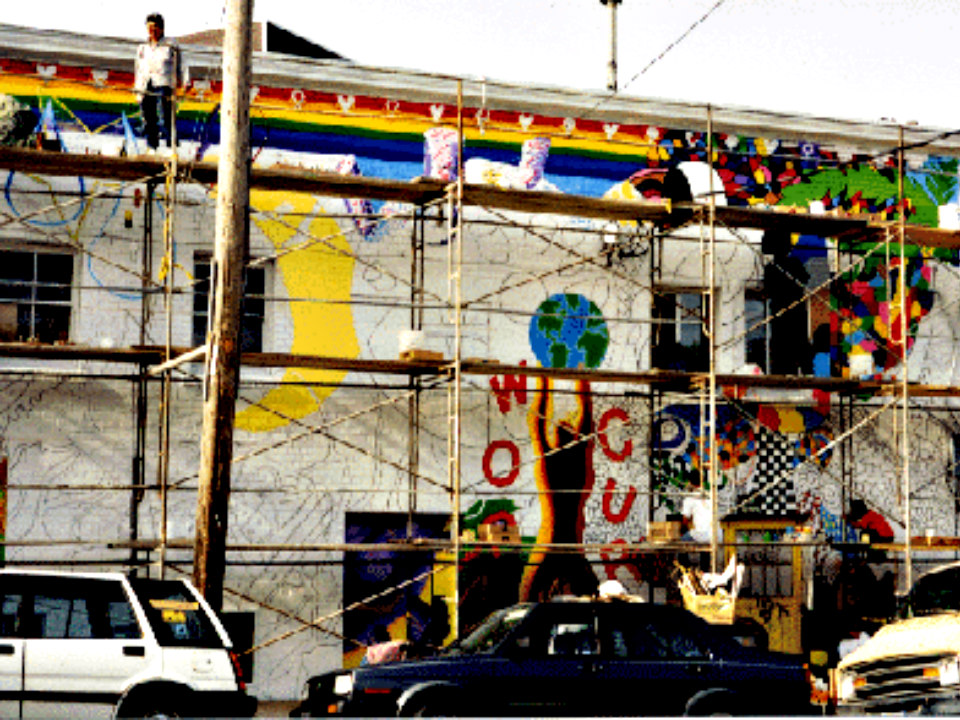
Work begins on the mural in 1998. (Photo: Courtesy of Precita Eyes Muralists)
According to Escalante and Clif Cox, “the teardrops become larger and filled with medication, until they ultimately splash into the cocktail glass of a bedridden patient below receiving an IV, in a potent symbol of the cocktail of medications taken daily by those infected.”
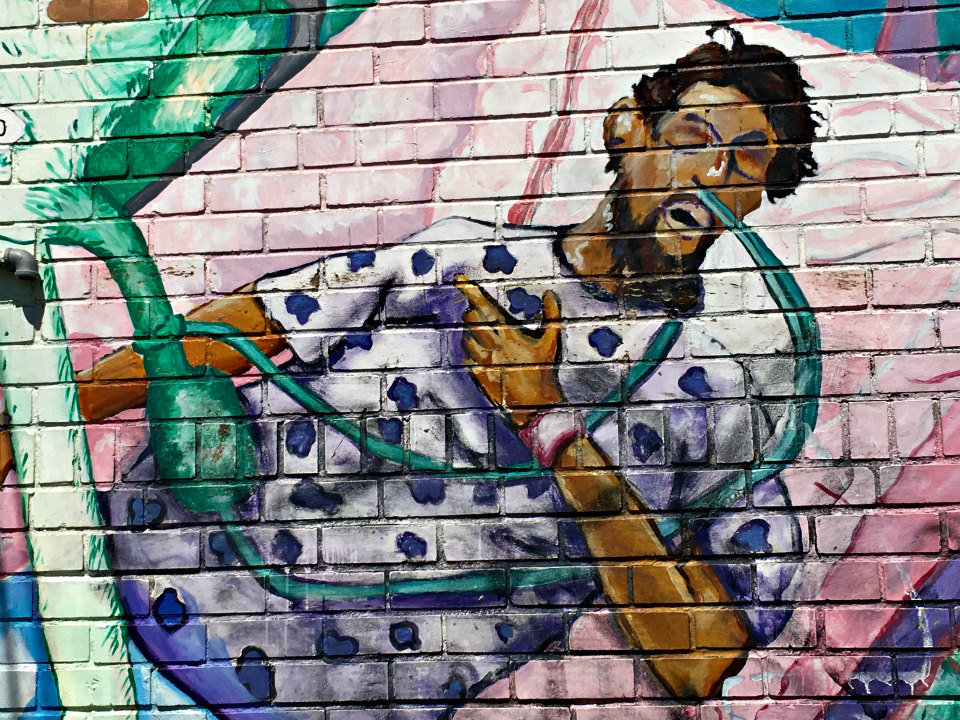
“The tears begin to diminish in size over a representation of the AIDS Quilt, in memory of the many who have lost their lives to this disease,” wrote Daniel Woods. “The first square of the quilt, Marvin Feldman’s, is shown.”
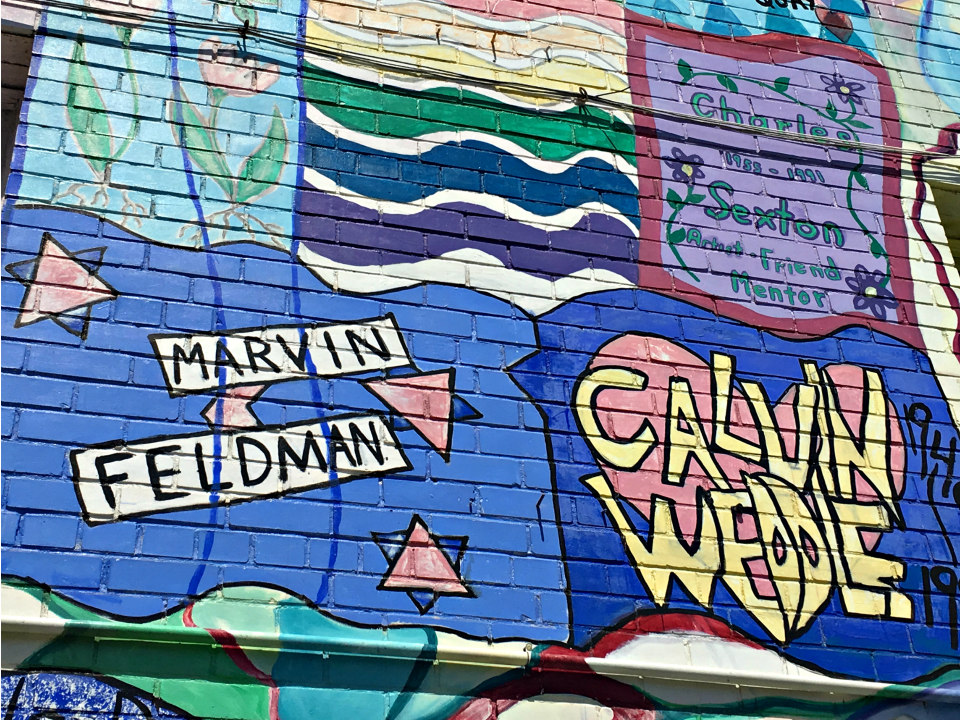
“Next to [the quilt] is a memorial scene of one of the artist’s lovers, who died, with a poem by the lover,” wrote Juan Carlos Oregon.
Arzate wrote that “the next image, the tricycle with the milk carton, represents the healing that community awareness brings by evoking the Great Memorial Day Tricycle Race and a memorial to Harvey Milk, who was surely one of the spectators.”
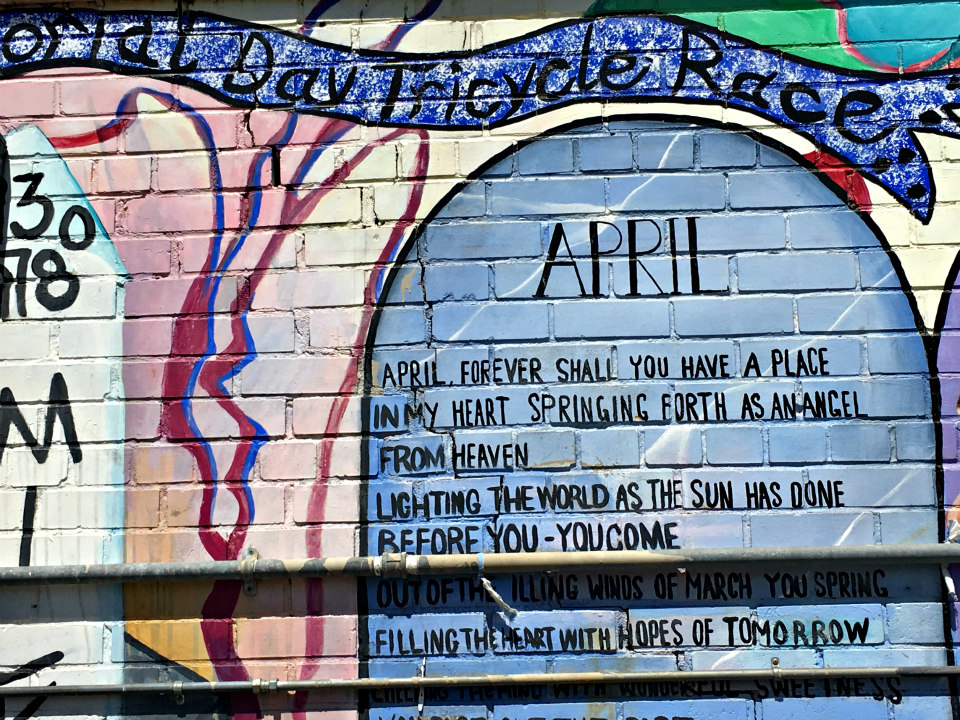
“The mural moves from dark to light—from the depression of disease to the hope of life,” wrote Mark Arseneau. “Hope, in the figure of the Volunteer, representing all the volunteer that have stepped forward on their own, giving their love freely to those in need. This image serves as a special thank you to all of the volunteers.”
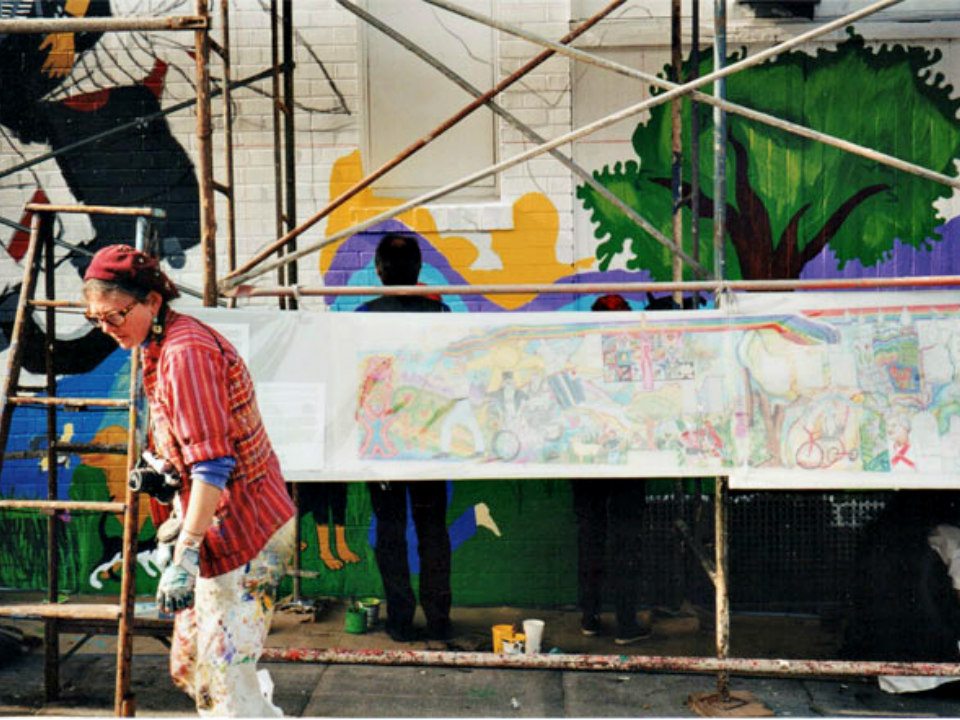
Artists working on the mural in 1998. (Photo: Courtesy of Precita Eyes Muralists)
“Above the tree,” writes Arseneau, “the AIDS candle is painted on a vent emerging from the building.”
According to artist John Michael Stevinson, “Castro” is also painted onto the side of the vent, to resemble the marquee of the Castro Theatre.
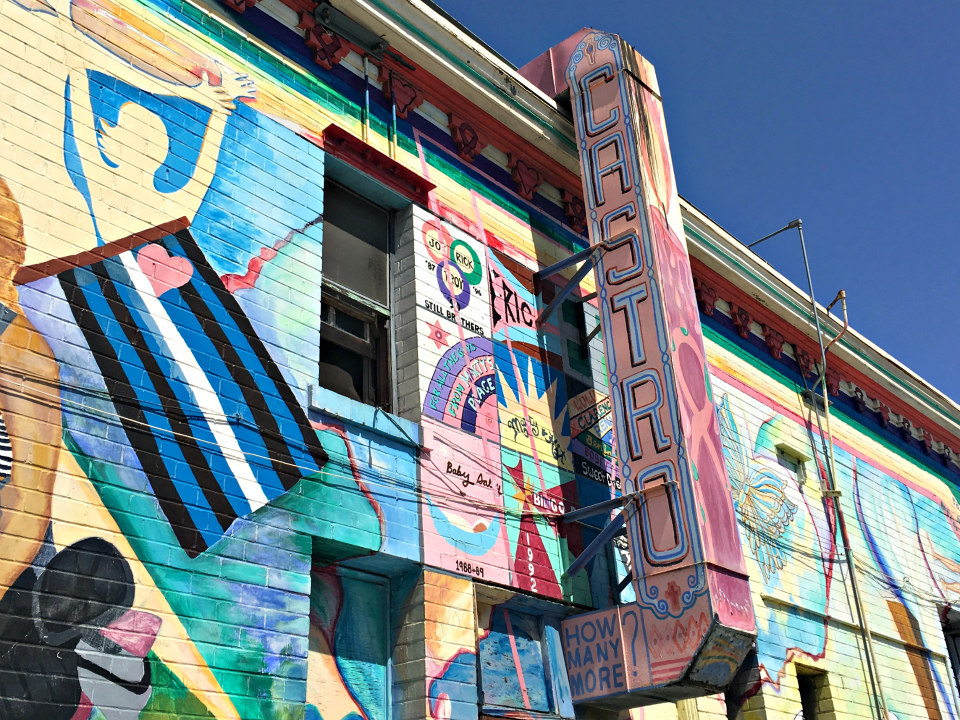
As you move closer to the corner of Market and 16th, you’ll see dancing figures and a rainbow flag, as well as a tribute to Dykes on Bikes. Artist Dorothy Bartolomucci had been selected as the pace rider in the 1992 Pride Parade.
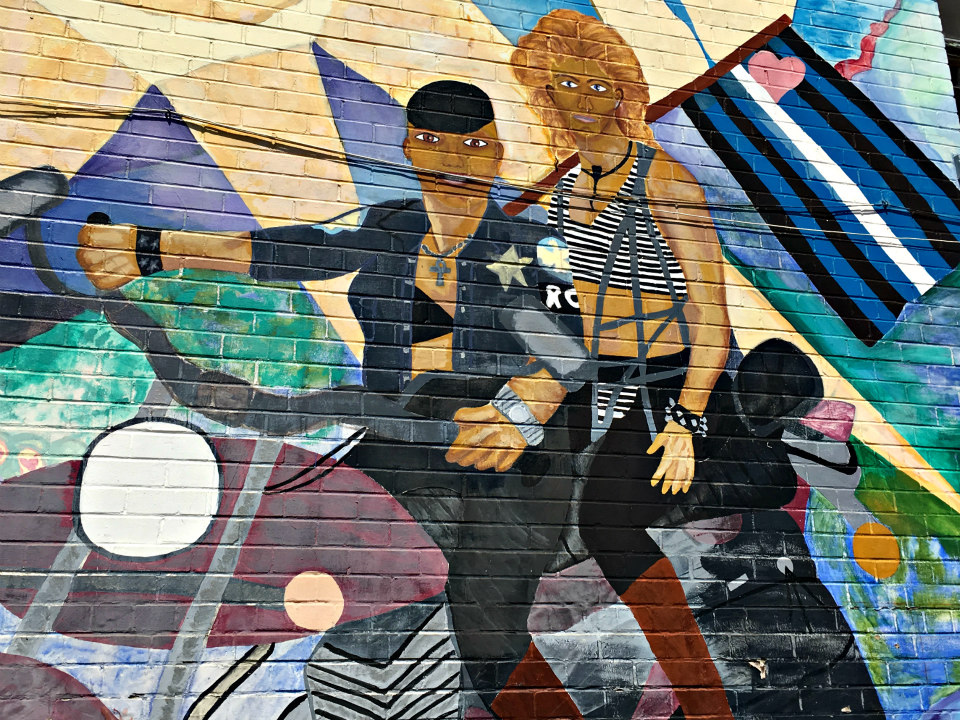
The mural ends with “lollipop love trees, fields of love, and mountains to climb. They are images which validate the struggle, the recognition of growth of love and hope and hope and flight,” wrote Karen Tripp. A genderless being with an enlarged heart for a head concludes the mural, offering symbols of light and hope.

Preserve, Don’t Paint Over
According to Cervantes, the mural “is important to the community who has been affected by the AIDS epidemic ... It’s important for them to have a voice and to feel that they are being seen and heard about their struggle with that disease—it’s really important to honor and respect that. It’s important to their families and to their friends and to their community."

The mural soon after its completion. (Photo: Courtesy of Precita Eyes Muralists)
Kathy Amendola, the tour guide behind Crusin’ the Castro Walking Tours, agreed, noting that it's one of the centerpieces of her tours.
“There’s just so much history involved, said Amendola. “It’s a huge part of our history of our community and the epidemic.”
Amendola and Cervantes hope that as plans unfold to tidy up the corner of 16th and Market, the historic mural is considered.
Back when it was first painted, Clif Cox, one of the mural's artists, also expressed hope for its future. “Hopefully, when I die or am cured of the AIDS virus, people will see some of the scenes from my AIDS existence in this history. A mural can translate, in non-threatening ways, the reality of existence and our hopes.”
